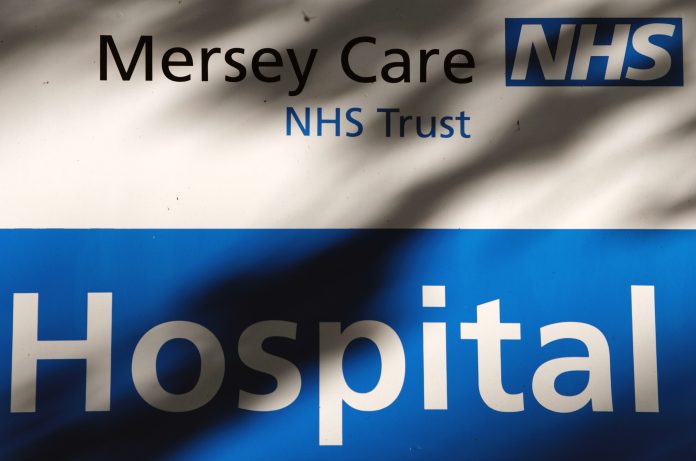Stephen Boyle, TeleTracking UK’s Product Specialist, recently returned to front line Critical Care nursing at East Cheshire NHS Trust in response to COVID-19. Here, he argues that most changes made within the NHS have been driven by necessity and not intentional innovation
Having recently returned to front line Critical Care nursing part-time as a result of COVID-19, I don’t believe the NHS has transformed into a new innovative operating model. Sure, the spotlight has been shone on how the NHS has managed to quickly reconfigure its estates and add capacity through private hospitals and The Nightingale. And, yes it’s wonderful that humans have the ability to adapt when placed under immense pressure as we’ve seen the NHS redeploy and retrain staff to cope. But, is this really deliberate innovation or are these changes just coping mechanisms driven by pragmatic necessity?
We did see further changes too, but again, it’s hard to describe them as being disruptive. There were rapid structural changes. Large payments to the underfunded social care system to help place elderly patients into nursing homes. Notably, the Department of Health assumed a more direct role in operations for the first time in a decade and there is a view that some of this direct command may stick and the demise of CCGs may come sooner than planned(1).
Necessary spending for additional ICU beds, increased payments for staff (overtime & incentive premiums) and for PPE has whittled away any financial support such as writing off historical deficits.
There is now a backlog of unmet care and long patient wait lists along with the added challenge of restarting in an environment of reduced capacity due to social distancing(2). Furthermore, the NHS is having to work flat out to re-establish capacity to near pre-C19 levels before Winter(3). And, not forgetting that C19 hasn’t yet disappeared.
Unintended consequences
A&E attendances reached a record low during the peak of Coronavirus, but it wasn’t due to some seismic shift in their attitudes to how they had previously accessed these services. It was because of multiple complex factors. Not wanting to be a burden and fear of catching C19. The result; deterioration to a critical level of illness and in some cases death. And let’s not forget too that the UK ground to a halt with the majority of the population staying at home meaning less commuting and travelling on busy roads. The reality was that even throughout a major part of the crisis patients needing major care interventions still attended, and the vast reductions in attendance came from reduced low level and less urgent attendances, and a significantly reduced number of admissions from the care home sector.
A story that will no doubt be heard of more in the coming months is that of the significant increase in Do Not Attempt Resuscitation/ CPR and palliation of the frail in the nursing home population.
But these changes are not long term, the pressure is already returning to A&E departments as the fear of the virus dissipates and the UK goes back to work(4).
Digital approach
We’ve seen non-urgent care patients being granted access to digital-first consultations, namely for 111, GPs and outpatient(5) services. But the question arises as to whether you get the same outcomes from a digital consultation that you do from a face-to-face one? There is no scientific evidence to prove this.
And what about those people who can’t readily access the digital service? There’s a whole host of reasons for this including; no or limited use of broadband or cellular devices. Language barriers. Women of lesser emancipated cultures – who historically access healthcare in very low numbers. Capital wealth. Homelessness. The exclusion of some of our most vulnerable citizens means that there will need to be a shift back to face-to-face services for some.
What’s the long term disruption?
Starting with some of the less tangible changes like improved health care literacy of the citizenry on what to do during the time of a pandemic. And the habit of frequent hand washing might also help us see some reductions in the spread of Norovirus and influenza this winter. Along with an increased up-take in the seasonal ‘flu-jab’.
The most visible NHS changes have been driven from necessity. Most have been pragmatic and yes, we have seen massive channel switches for how healthcare can be delivered. I do foresee a sustained disruption of the old-normal operating model in especially, the ambulatory care settings(6). Meaning permanent significant percentage shift from face-to-face to digital consultations.
Zoom Chemotherapy
Not a realistic possibility. Firstly, chemotherapy and joint replacements cannot be given ‘over the airways’ and secondly, receiving a terminal diagnosis via email is somewhat unethical.
Beds will need to re-open; staff will need to be deployed back to their wards and the workforce pressures will reappear.
There is no doubt that we’ll see high levels of ‘burnout’ and PTSD among NHS staff as a result of the Coronavirus pandemic. Meaning it’s highly likely NHS staff will need to take time off and the NHS will have to provide psychological services, at an unprecedented scale.
Testing times
The NHS will have to operate while undertaking a new discipline of serial C19 (PCR) and C19 antigen testing regimes (7) for staff and for patients. Then streaming patients into appropriate pathways(8) . Implementing operational services against a regimen to maintain social distancing and ‘one way’ systems. We must be able to re-establish treatment for Cancer patients and patients with compromised immune systems safely in NHS facilities.
A key point here will be the dependency the NHS services will have on ‘testing’. Here I mean the scale of testing, the responsiveness of testing, and overall the turnaround of test results will directly impact how much capacity and staffing providers will have available.
Clinically, my real challenge is how do you show empathy and care to patients while you both are wearing facemasks?
Total visibility
There are big challenges that lay ahead for the NHS. Every single patient on a ‘waiting list’ for treatment needs identifying, and this requires sharing waiting lists between providers. It requires re-establishing effective patient throughput & flow in new pathways. It requires seeing the patient’s journey not ending with their discharge from a hospital bed. It requires that care to continue in another facility or be supported by services at home.
It also requires the capability to view capacity, not just of physical things (e.g. beds) but non-physical too (e.g. Virtual Wards, rapid response team capacity, call slots).
Moreover, this capability needs to extend beyond the walls of each individual hospital, taking into consideration that a hospital’s capacity might now include additional capacity located in the local, or not-so-local, private or neighbouring NHS hospital. That services and capacities will need to be shared flexibly with neighbouring providers (mutual aid).
So, the scale and locations of care will complicate the patient’s pathway and access to treatment is further complicated by testing and your C19 status.
It’s now more important than ever to utilise every minute of capacity.
Every minute counts
For UK healthcare, the rapid establishment of control rooms & command centres and the centralisation of decision-making and data is one of the good things coming out of the crisis.
Many NHS providers have reported that during C19, command centres have delivered the operational sensitivity and levels of situational awareness that they have never had before.
This capability has helped them manage the rapid changes brought by C19, allowing for rapid decision making and a best use of resources (e.g. bed utilisation and the distribution of scarce PPE).
The lack of interconnectedness and sheer complexity of healthcare systems has been exposed as a result of the pandemic. Furthermore, highlighting how the paucity of real-time data created significant challenges in the pre-C19 model that operated without these centralised command centres. Particularly with the coordination of care, system-wide responsiveness, and closed communication gaps, which lead to delays for patients in accessing care, inflated lengths of stay, cause high variable costs, and contribute to staff stress.
If we are to meet the needs of our patients and tackle the stored up, unmet need in the population caused by C19 then every bed minute counts and the NHS needs technologies to help it maximise the occupancy of those beds safely. For example, leveraging real-time data and providing operational live views of capacity and demand, command centres provide decision-makers the insights needed to ensure delays in care coordination are minimised and communication gaps closed.
The point is; command centres are not just for a crisis but for every day.
Dr Mark Britnell, Chairman and Partner of the Global Health Practice at KPMG International and author of In Search of the Perfect Health System, cites command centres as one of the ten ways in which health systems are adapting to a new reality.
Until we have an effective treatment or vaccine for C19, we can’t be sure that what we knew to be normal will ever return. But what we do know is that patients should receive the right care, in the right place and at the right time. Some of the changes brought about by the reaction needed to cope with C19 may stay. But, establishing a real-time patient flow command centre will mean every minute of capacity can be seen and can count to ensuing patients get the care they need when they need it.
(1) HSJ podcast – the NHS in the next 6 months (May 2020)
(2) Be that 1m or 1.5m or 2m all will impact capacity
(3) However the Phase 3 detailed guidance has been delayed on this till July
(4) 50 % increase in attendances since the major drop off in April 2020
(5) Drive from the DoH for Hospitals to adopt the ‘Attend-Anywhere’ software platform
(6) GP practices, clinics and outpatient departments
(7) BMJ – scathing report on the poorly planned use of antigen testing
(8) E.g. Non Covid (green pathways)











